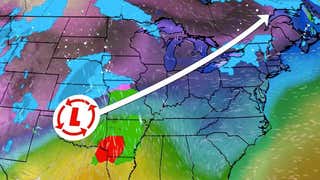

US
°C





This image, taken Dec. 16, 2015, shows the massive crack in the Nansen Ice Shelf on the edge of Antarctica.
(Image via NASA)
A 30-mile-long ice shelf is in danger of losing its front and floating into the Southern Sea, according to images captured from above by NASA.
The administration recently posted an image of the Nansen Ice Shelf, located near Terra Nova Bay, that showed a huge crack running across the plate. Measuring 30 miles long and 20 miles across, the ice shelf is twice the size of Manhattan, Gizmodo notes.
The crack was spotted by the Operational Land Imager aboard Landsat 8, according to NASA's Earth Observatory. An image of the exact same area two years earlier showed no crack along the ice shelf.
(MORE: Marine Life Increasingly Calling Offshore Oil Rigs Home)
This image, also captured by NASA's Operational Land Imager, shows the crack-free ice shelf on Dec. 26, 2013.
(Image via NASA)
In November and December, NASA Goddard scientists Christine Dow and Ryan Walker flew over the ice shelf in a helicopter to study the crack.
“There’s a huge crack, miles long and sometimes over a hundred yards wide, which runs more or less parallel to the front of the ice shelf,” Walker wrote in a blog post. “Over the winter, the sea surface freezes and traps small icebergs in the crack, producing a fascinatingly broken icescape.”
During the trip, Dow captured this image of Nansen during its separation:
(Christine Dow/NASA)
Earlier this month, satellite imagery confirmed the ice shelf is still hanging on, NASA added, but warned there's a chance the front could break off soon.
NASA noted that the loss of an ice shelf does not contribute to sea level rise. "But lose part of the ice shelf," the report added, "and the seaward flow of land ice can accelerate—a phenomenon that contributes to sea level rise."
As for the possible link to climate change, the National Snow and Ice Data Center saidit is a factor in the rapid collapseof ice sheets in Antarctica, as well as the Arctic. The collapse of these massive pieces of ice can be blamed on warmer air and water temperatures, NSIDC also said.
MORE ON WEATHER.COM: NASA Documents Ice Loss
The Aprapaho Glacier in Colorado in 1898. (NASA)












